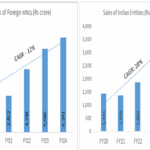Yes, both terms refer to people who do not have symptoms. The difference is that asymptomatic refers to people who are infected but never develop symptoms during the period of infection while pre-symptomatic refers to infected people who have not yet developed symptoms but do go on to develop symptoms later.
This distinction is important for public health strategies to control transmission. For example, laboratory data suggests that people might be the most infectious at or around the time they develop symptoms. Therefore, in WHO’s case investigation and contact tracing guidance, it is recommended that people be considered ‘contacts’ if they had contact with an infected person from 2 days before that he/she developed symptoms.
Yes, COVID-19 is a new disease. While more information becomes available every day, many questions about transmission remain. A vast effort by research teams and networks around the world is underway to answer those questions.
WHO and our partners are working to gain a better understanding about:
- different transmission routes, including through droplets of different sizes, physical contact, fomites, and the role of airborne transmission in the absence of aerosol generating procedures;
- the dose of virus required for transmission to occur;
- the characteristics of people and situations that facilitate superspreading events such as those observed in some closed settings;
- the proportion of infected people who remain asymptomatic throughout the course of their infection;
- the proportion of truly asymptomatic persons who transmit the virus to others;
- the specific factors that drive asymptomatic and presymptomatic transmission;
- and the proportion of all infections transmitted from asymptomatic and presymptomatic individuals.
WHO recommends the following set of measures to prevent person-to-person spread of COVID-19
- Limit close contact between infectious people and others. Ensure a physical distance of at least 1 metre from others. In areas where COVID-19 is circulating and this distance cannot be guaranteed, wear a mask.
- Identify infected people quickly so that they can be isolated and cared for and all of their close contacts can be quarantined in appropriate facilities.
- Clean hands and cover coughs and sneezes with a tissue or bent elbow at all times.
- Avoid crowded places, close-contact settings and confined and enclosed spaces with poor ventilation.
- Ensure good ventilation in indoor settings, including homes and offices.
- Stay home if feeling unwell and call your medical provider as soon as possible to determine whether medical care is needed.
- In countries or areas where COVID-19 is circulating, health workers should use medical masks continuously during all routine activities in clinical areas in health care facilities.
- Health workers should also use additional personal protective equipment and precautions when caring for COVID-19 patients.
- Workplaces should have in place protective measures, details here.
WHO regularly issues scientific briefs to explain topics in depth for a scientific audience. The brief on COVID-19 transmission summarizes what is known about how the virus spreads between people, who can transmit the virus and when people pass the infection from one to another, and the implications for preventive measures to be adopted. It also outlines some key areas where more research is needed and how these results will help inform advice and guidance.
This information is important for understanding how best to prevent infection and limit the spread of the virus between people.
WHO scientific briefs are living documents, meaning they are updated as more studies become available. COVID-19 is a new disease and we are learning more every day.
WHO continues to review information provided by published studies, including those that and are available as “pre-prints” (non-peer-reviewed manuscripts that are uploaded to pre-print servers). WHO also identifies critical questions that need to be answered to understand and improve our response to COVID-19 and guides research efforts on these issues. WHO convenes regular teleconferences with global expert networks of different scientific disciplines to evaluate all available studies and determine how the available evidence, best practices and experience of frontline workers can be translated into guidance and advice.
Source : WHO
healthy soch







